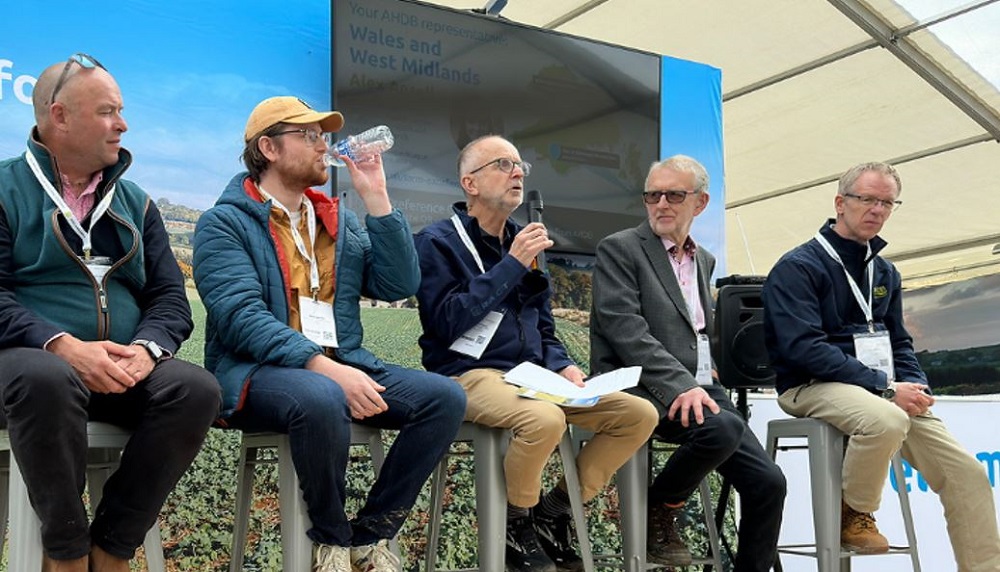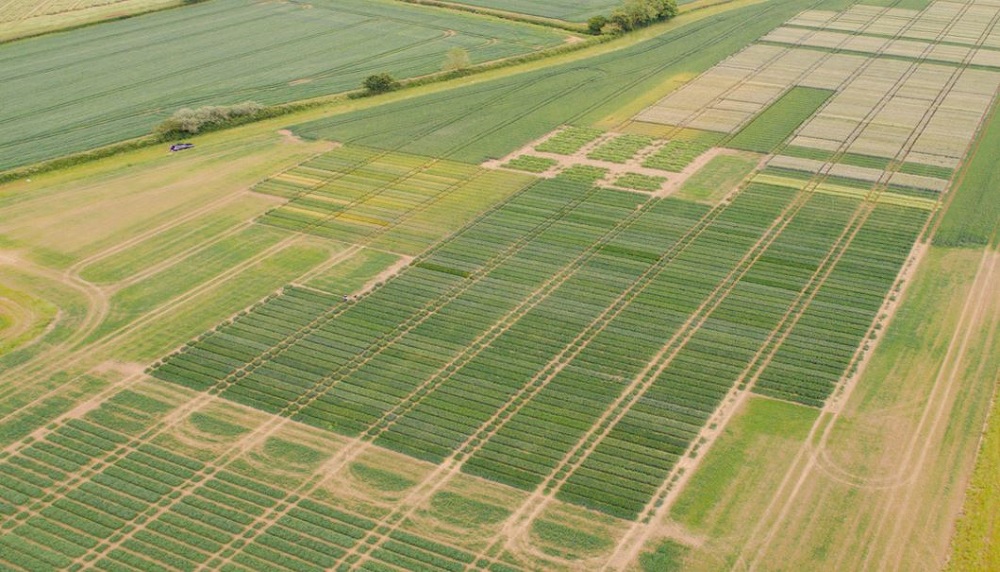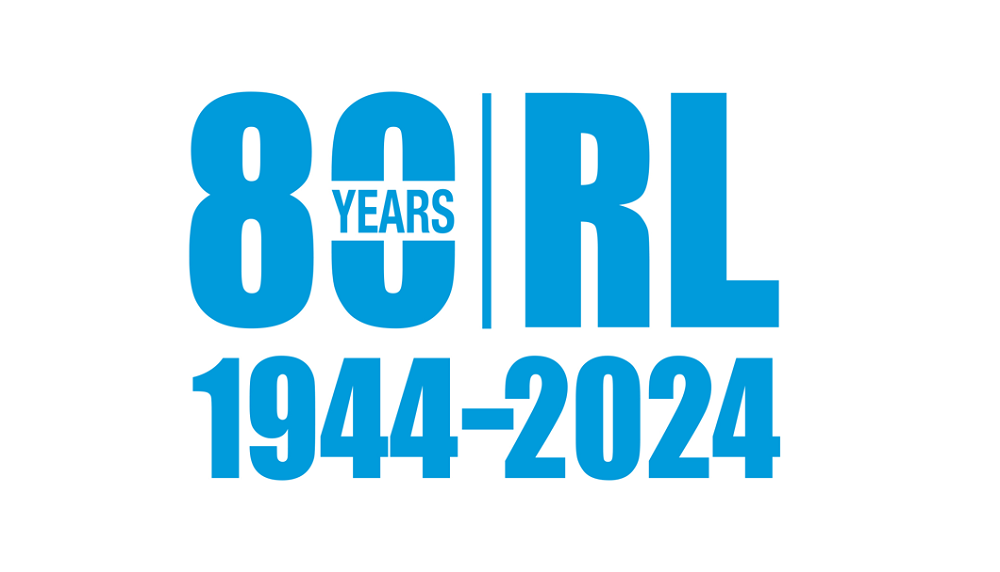The future of variety selection in the UK
Tuesday, 25 June 2024
The Recommended Lists for cereals and oilseeds (RL) celebrates its eightieth birthday in August. Paul Gosling and Jason Pole reflect on the future of variety selection.
What will the world be like in 2044? Will Earth’s population hit 10 billion? Will robots powered by artificial intelligence (AI) make farmers increasingly redundant? Will the UK be nearing its net zero targets? Will English sparkling wine surpass champagne as the choice for toasting success? Will the Recommended Lists for cereals and oilseeds (RL) still be the go-to source of variety information?
In August 1944, the National Institute of Agricultural Botany (now NIAB) published the first recommended list.
We charted the first 80 years of the variety-trialling project in a recent article.
This article explores how the landscape could develop in the next 20 years, drawing upon the views of breeders and other stakeholders.
Breeding for uncertainty
Among the views gathered, one thing is clear: we are at yet another turning point. Outright productivity is no longer in vogue, with farmers needing to deal with erratic weather patterns and changeable pest and disease pressures while increasingly helping to protect the environment. Farmers want something different from their varieties.
The climate is likely to remain conducive for cereal production until at least 2080, according to recent research. Warmer temperatures may even positively impact average wheat yields in the major UK growing regions. This good news is tempered by the predicted increases in year-on-year variation, with adaptation needed to soften the blow.
Seasons increasingly flip from one extreme to another. Just consider the current season, which has delivered unrelenting wet weather for many. Contrast this with the 2021/22 season, which saw below-average rainfall and above-average temperatures every month (bar November).
It all adds up to increasing uncertainty, which is a massive challenge for farmers and breeders.
Cambridgeshire farmer (and AHDB Cereals & Oilseeds Sector Council Member) Russ McKenzie said that wheat rusts have exploded on his farm in 2024. Even stalwart Crusoe has relatively high levels of yellow rust.
He wonders if it just a “blip” or the new normal. Certainly, the UK’s diverse rust pathogens don’t appear to obey the rules like they used to.
With wet conditions continuing into flowering, ear disease may also rear its ugly head this season (increasing mycotoxin risks with it).
Farmers need varieties that de-risk growing. It is no longer about delivering the best headline yield, it is more about resilience, with a good disease-resistance profile being a priority.
DSV breeder Matt Kerton said:
“We need to test varieties over multiple years to deal with seasonal variation. For example, this helps us develop varieties that withstand waterlogging as well as drought.”
Adapting to change
Although sustainability is being brought into sharper focus, it does not sit at odds with increasing yields. For example, Chris Guest, Managing Director at NPZ-UK, said:
“Yield development increases efficiency per hectare. It will always be a breeding priority.”
Nick Pitts from The Scotch Whisky Research Institute (SWRI) said that end users take the long-term sustainability of the barley crop very seriously. For distillers, this means alcohol yield per hectare is becoming as important as yield per tonne.
He feels the RL has done a “phenomenal job” in listing varieties with good distilling and processing qualities, along with strong yields. He has seen a tremendous boost in performance in recent years, with exciting advances just around the corner.
One development is a new distilling category for winter barley – non-GN (glycosidic nitrile) varieties. With much higher yields than spring barley equivalents, non-GN winter barley varieties are an exciting prospect. A switch to winter varieties also avoids the crop establishment issues associated with dry springs. As they mature much earlier, they could help northern growers too.
In a warming climate, new crops may also fall within the RL’s scope. With the rise of cabbage stem flea beetle, the viability of oilseed rape is being questioned by growers. Winter linseed is a potential alternative. With acreages increasing and new varieties entering GB and NI Variety Lists (VL) trials, the crop may eventually secure a place on the RL. VL trials have also included some spring rye and durum wheat varieties. Lists for such crops are some way off, but we are monitoring developments.
Breeding techniques
In less than three decades, plant breeding innovation has progressed faster than any other point in history, according to the British Society of Plant Breeders (BSPB).
The science of genomics has revolutionised the way breeders manage crop genetics and track genes through breeding programmes.
For example, we have seen the rise of high-throughput screening, based on genetic markers, which allows traits to be selected at early growth stages (often long before they would be observed in the field).
Rapid developments in gene sequencing technology and increasing computer speeds mean the prospect of even faster screening over the next 20 years.
It also opens the prospect of accessing the huge genetic diversity locked away in landraces and long-forgotten varieties much more easily.
Recently published research has reported on the genetic sequencing of a collection of more than 800 wheat varieties and landraces assembled in the early 20th century (by the old PBI in Cambridge). The task would have been impossible 20 years ago, but the researchers completed it in just three months.
New genes for disease resistance and stress tolerance have already been identified. It will take time to get these genes into elite modern varieties, but it shows how new techniques can tap into previously hidden genetic resources.
Last year, the Genetic Technology (Precision Breeding) Act passed into law, unlocking more modern breeding techniques. These have the potential to introduce genetic changes faster than traditional breeding. Gene editing is probably the most well-known example.
The industry has learned lessons after the introduction of genetically modified organisms in the 1990s, with caution now applied at every step to keep consumers informed and supportive.
During the sustainable varieties debate at Cereals 2024, AHDB’s Mike Gooding asked Nick Pitts if whisky drinkers care about gene editing. Nick said that such technologies should not be pre-judged, with each opportunity carefully scrutinised. He mentioned that SWRI already supports research that uses gene editing (CRISPR technology) to improve the quality of barley grain.
New traits
Irrespective of the technique, new traits will continue to be introduced. Recent additions to the trait armoury include BYDV resistance/tolerance (barley and wheat), orange wheat blossom midge resistance (wheat), and resistance to clubroot, TuYV and pod shatter (oilseed rape).
As crop pests and pathogens continue to overcome genetic defences, breeders will need to look for the next sources of resistance.
For Chris Guest, this includes clubroot. Based on a single dominant gene, the same resistance mechanism (Mendel resistance) is present in all resistant crops, including oilseed rape varieties. Some strains of clubroot can overcome this resistance, and it is no longer effective in some areas. Chris stresses it is not just current pathogens that need to be tackled but new disease and pest issues too.
Richard Summers, Head of Cereal Breeding and Research at RAGT, says horizon scanning helps to detect emerging threats. It also highlights novel genetic material for UK breeding programmes, with Richard citing potentially useful sources of septoria tritici resistance in varieties from western France. Security of production is far more important these days, he adds, with varieties needing a broad base of resistance coupled with yield and quality traits.
The latest genetic and molecular techniques are essential to track and produce trait-loaded varieties. Unfortunately, not all traits are created equal, with some proving notoriously difficult to work with. This was recently illustrated by results from two AHDB scoping reviews.
With a focus on nitrogen and fungicides, the research exposed the complexity associated with developing and measuring varietal performance under reduced input levels. Traits are often controlled by multiple genes, adding complexity to variety breeding and trialling. Understanding how much weight results have in commercial situations is also tough.
The reviews stemmed from the latest RL review, which also highlighted how extra data could obtained from existing trial results, with on-farm demonstrations being a potential route to get developments to levy payers.
Regular horizon scanning is important for the RL too. For example, it helps identify whether shifts in farmer priorities are short-term ‘noise’ and a potential distraction or a long-term industry need.
The RL review was conducted while hefty spikes in fertiliser prices were still raw in the memory. It focused attention on nitrogen use efficiency (NUE). If fertiliser prices fall back further, would interest in NUE wane?
Variety pipeline
The RL is part of a wider variety selection pipeline, with the VL being an essential component. Sitting between breeders and the RL, the VL grants permission to market varieties in the UK.
Richard Summers says the VL sorts the wheat from the chaff, whereas the RL helps people sift and select to find the cream of the crop (for their farming system).
Since Brexit, the UK system has started to diverge from the EU system. There are examples where variety registration is achieved in the EU but not in the UK. Chis Guest is clear that the variety registration system must protect intellectual property but not disadvantage UK farmers’ access to the best genetics.
Genomic technologies could speed up the variety registration process too. APHA’s Michael Brown said the international UPOV convention (to which the UK system belongs) sets the direction and any major change to the process requires international agreement.
Opportunities for using genotypic data to simplify and speed up process are on their radar. Richard Summers said that phenotypic studies (based on observable characteristics) used in the VL system are relatively slow and costly and the system can frustrate – especially when a breeder has evidence that the variety genetics are significantly different. But he also cautioned that molecular tools are only part of the solution.
Technology takeover?
Although technology continues to advance, a complete takeover is still a long way off.
For example, the COVID-19 lockdowns in 2020 made us turn to drones to help assess RL trials. The experience showed that drones are very good at some things and quite poor at others. It reinforced how important it is to have boots on the ground.
Technology will become more important. The RL app and variety selection tool are recent farmer-facing examples.
We will continue to explore how technology can help us manage the trials and deliver results, with some exciting developments coming soon to maximise the RL’s relevance.
With the pace of change, it is impossible to predict where we will be in 2044. In many ways, the RL is likely to remain similar. Certainly, it will stay data-driven and focus on the needs of levy payers.
Technology will develop and the way varieties are trialled and tested could be very different. Maybe we will also see an AI-powered RL. Watch this space.
Sustainable varieties debate
 AHDB
AHDB
The debate took place at Cereals 2024 on 11 June 2024.
Panellists (left to right)
- Russ McKenzie – Cereals & Oilseeds Sector Council Member and Cambridgeshire farmer
- Nick Pitts – SWRI (The Scotch Whisky Research Institute)
- Richard Summers – RAGT
- Michael Brown – Head of Plant Variety and Seeds – APHA
- Paul Gosling – Recommended Lists (RL) Manager, AHDB
About the sustainable varieties debate
Podcast
 AHDB/Shooting Stone Media
AHDB/Shooting Stone Media
 AHDB
AHDB



